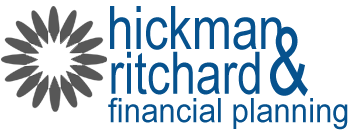There are a number of considerations when it comes to gearing, the investment assets you may choose to gear and the way you structure your debt.
A gearing strategy can be set at three levels:
- Positive gearing – where income from the investment exceeds the interest payable on the loan.
- Neutral gearing – where income from the investment is equal to the interest payable on the loan.
- Negative gearing – where the income from the investment is less than the interest payable on the loan. The excess interest expense is an allowable deduction against other assessable income, which for a taxpayer on the top marginal rate is currently worth 47% (inclusive of the Medicare levy).
Investing in growth assets such as shares or property using borrowed funds can be one of the most effective ways to accumulate wealth over the long term.
Investors are solely relying on a future capital gain when undertaking a negative or neutral gearing strategy. Negative gearing is tax effective in that the interest expense is fully deductible against the income generated by the geared investment and other assessable income. There are also other tax breaks such as the deductibility of depreciation (for property) and franking credits (for shares) to help subsidise the cost of the investment. In addition, for individuals, 50% of any capital gain is exempt from tax where the investment is held for at least 12 months.
Examples
Positive gearing strategy
If $100,000 were invested for a year in assets that produced a return on investment of 10% per annum, the total return on investment would be $10,000.
If the investor had also used a gearing strategy and borrowed $50,000 (at a cost of 7% per annum) and invested this in the same assets producing the same 10% per annum return, the return on investment would be 10%, less the cost of finance (7%) – that is, a net additional return of $1,500 using someone else’s money.
The net return can be greater than this when the tax deductibility of interest is taken into consideration.
The below examples of negative gearing illustrate how the negative cash flow from the investment can be offset by the deductibility of interest plus other tax breaks.
Negative gearing an investment property
Sarah earns a salary of $200,000 and borrows $400,000 to buy an investment property. The property generates rental income of $20,000 per annum while interest expense on the loan (interest only with no principal repayments) is 7% or $28,000 per annum. In addition to the deductible interest expense, there are the following ‘non-cash’ deductions:
- $2,500 depreciation
- $4,500 building amortisation (2.5% based on a construction cost of $180,000)
| Financial position | Without negative gearing strategy | With negative gearing strategy |
| Salary | $200,000 | $200,000 |
| Rental income | – | $20,000 |
| Non-cash property deductions | – | $7,000 |
| Interest expense | – | $28,000 |
| Taxable income | $200,000 | $185,000 |
| Tax payable (incl. Medicare levy) | $64,667 | $57,617 |
| Net cash | $135,333 | $134,383 |
The difference in cash flow of only $950 has been assisted by the $7,000 tax deduction for the non-cash depreciation and building amortisation expenses.
These examples demonstrate the worth of tax deductions to an individual on the top marginal tax rate in the first year of a negative gearing strategy. Over time, negatively geared investments can become positively geared – especially when rental income or dividends are reinvested.
Couples with one person on a higher marginal tax rate than the other, should carefully consider who should be the borrower and owner of investments over the long term. While initially it may be tax effective to have a negatively geared investment in the name of the person with the highest tax rate, if it’s expected to become positively geared in the future, it may be more effective to have the loan and investment in the name of the person with the lower marginal tax rate from the outset. Especially when you consider the potential capital gains tax, stamp duty and loans fees that might be incurred in transferring the investment and loan.
Trusts and companies can also negatively gear investments, however the following should be considered:
- Trusts and companies cannot distribute losses, they need to be carried forward and offset against future assessable income.
- While the company tax rate is 30% for companies that are not base-rate entities which have a tax rate of 25%, companies are fully assessed on capital gains as opposed to the 50% discount applied to assets held for 12 months or more by individuals and trusts.
Negative gearing a share portfolio
Sarah earns a salary of $200,000 and borrows $400,000 to invest in a share portfolio. The share portfolio generates a dividend yield of 4% fully franked, while the interest expense on the loan (interest only loan) is 7% per annum under a line of credit secured against her home.
The below table illustrates the impact the negative gearing strategy has on Sarah’s cash flow.
| Financial position | Without negative gearing strategy | With negative gearing strategy |
| Salary | $200,000 | $200,000 |
| Dividend | – | $16,000 |
| Imputation gross up | – | $6,857 |
| Interest expense | – | $28,000 |
| Taxable income | $200,000 | $194,857 |
| Tax payable (incl. Medicare levy) | $64,667 | $62,250 |
| Franking credit | – | $6,857 |
| Tax payable (incl. Medicare levy) and after franking credit | $64,667 | $55,393 |
| Net cash | $135,333 | $132,607 |
The difference in cash flow is $2,726 which is approximately 0.7% of the investment portfolio. Sarah hopes that her after-tax capital gain will be greater than this cash flow loss.
Source: BT
